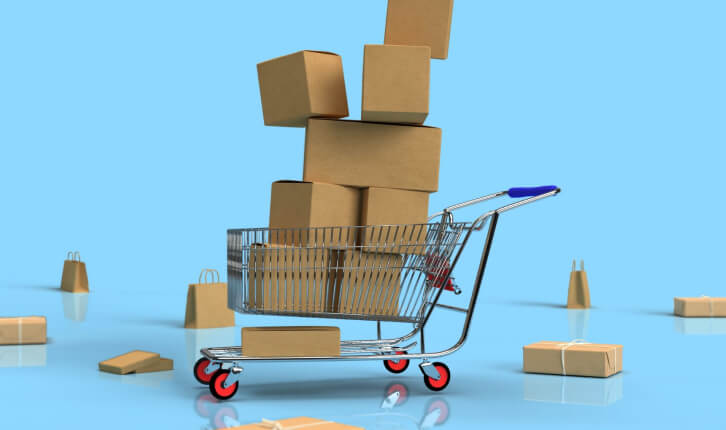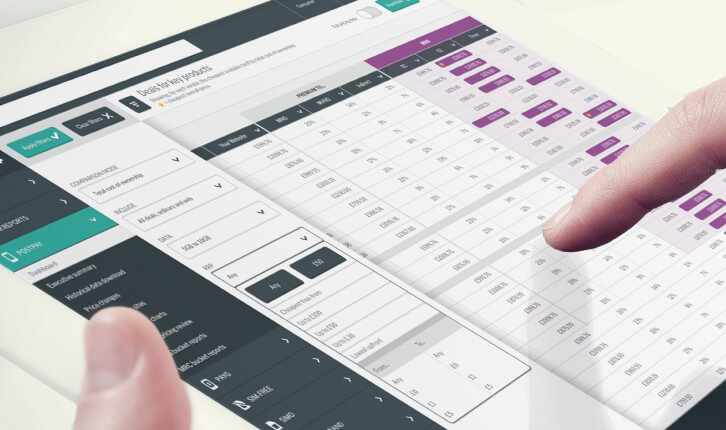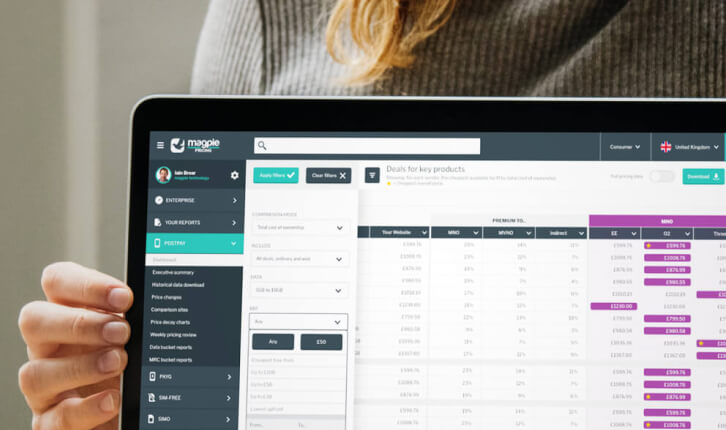Published on: November 24, 2022 | Last updated on: October 11, 2024 |
As a thriving business, launching products is always an exciting time.
You’ve got the initial anticipation, then the launch date itself, and finally (hopefully) the inflated sales figures that follow.
But some companies experience negative consequences on the digital shelf after releasing the brand-new product they’ve worked so hard to perfect; instead of attracting customers from other brands, they end up stealing sales from themselves. This can be explained through one increasingly common phenomenon: product cannibalisation.
In this article, we look at product cannibalisation in detail, covering what it is, the potential causes and impact, as well as tips on how to avoid making the same mistakes as other businesses.

Also known as market cannibalisation or corporate cannibalisation, product cannibalisation is when a company’s newly introduced product steals sales from its existing ones.
Rather than drawing in new customers, this has the opposite effect, creating internal competition that can seriously harm a business’s bottom line. This can happen to businesses of any size, be it household names or lesser known brands.
Product cannibalisation may also bring about other issues, such as:
If you want to win at the digital shelf, you’re going to need to keep a close eye on your products and make sure nothing happens with them that could cause cannibalisation.
There are many different types of product cannibalisation, some of which include:
Businesses can unwittingly cause product cannibalisation by doing any combination of the following:
If your customers can’t clearly differentiate the USPs of each product you’re offering, they will choose one that’s more familiar – even if it’s an older model – which could end up hurting sales for any new products you’ve released.
Appealing to an existing customer base is important, but you should always aim to attract new customers with every product your business offers; not doing this could result in stagnation and, eventually, being unable to compete with the rest of the market altogether.
Pricing your new product too cheaply – or too expensive – will mean customers naturally gravitate to older models, or worse, competitor goods, both of which could impact your bottom line more severely than you anticipated!
Product cannibalisation has two major effects on a business; these are:
Business is all about supply and demand, and if you’re oversupplying when there’s not much demand, your company will suffer; just ask any brand who’s experienced store closures because they overestimated how much customers actually wanted their products (think Starbucks, Tesco, etc.).
While there are some brands who use product cannibalisation to stay competitive (Coke and Apple are great at this), most end up damaging their brand beyond repair because they try to extend themselves too far; by focusing more on a target niche instead of trying to dominate the market, you’ll stand a much better chance at commercial success.
As far as limiting product cannibalisation is concerned, you can do lots of things that will help prevent it from occurring. Here are a few proven tips:
Finding new customers is a big part of avoiding product cannibalisation, so be sure to conduct thorough research into your target market. You should identify key customer values, beliefs and buying patterns, while also looking into your competition’s tactics to see if there’s anything important you yourself can do to earn more business.
Craft personas and put together demographic charts to help you and your team stay on track when sending new products to market.
Promotional activity can help or hinder your products when they’re out on the market; the latter usually results in product cannibalisation, so it’s important to get your promos right – letting them complement your inventory.
By tracking promotions, you’ll be able to decide where best to target them for your next big product launch. Perhaps key seasonal events would work best, or certain awareness days? Either way, paying attention to promotions can help reduce the likelihood of product cannibalisation becoming a problem for your business.
Where you advertise your products or services has a big impact on their cannibalisation risk. Too much of one product on a single channel could lead to it developing ‘go-to’ status, which may work for your company but could seriously harm any future innovations.
Remember to spread your marketing message across different channels so that all your products and services are visible, thereby creating a more accessible, appealing and engaging marketplace for customers.
How you price your products and what customers think of that pricing has a big impact on product cannibalisation. Now though, thanks to innovations in digital shelf analytics, you can experiment with different pricing situations and predict how customers will react, thereby minimising the likelihood of negative reception when a new product is released.
You can even go ‘old school’ and arrange focus groups to gauge how customers feel about products and how they are priced in real-life circumstances.
Product cannibalisation is a constant possibility for businesses looking to innovate and grow on large scales; therefore, measuring relevant data is the best way to stop this happening.
Use a tool like Magpie DBX to not only safeguard against product cannibalisation but also monitor the wider areas of your business’s marketing plan.
As a one-stop shop for all your marketing needs, Magpie DBX has been designed to help you monitor key areas that help prevent product cannibalisation.
For example, its Stock & Delivery feature tracks which of your partner retailers are offering the best terms, as well as what’s in stock and when it can be shipped, so you always have readily available inventory before your next big product launch.
Ready to see how Magpie can help your company avoid product cannibalisation? Get in touch with us and request a demo today!
Also, check out our social media – if it doesn’t help drive business growth, we don’t cover it.

Imagine a shopper has had their eye on one of your products for a really long time. They’ve done all their research, ticked everything off their own internal checklist – they’re ready to go.
Now imagine, for some reason or another, they won’t convert. Can’t bring themselves to do it.
Eventually, they abandon their cart altogether, leaving you (once again!) without a sale.
Checkout abandonment is a common occurrence on the digital shelf, mainly because of the choice customers have nowadays. How are you going to create a sense of certainty with a purchase when they’ve got all this competition staring them in the face?
In this article, we explore what causes checkout abandonment and how you can prevent it from harming your business’s bottom line.

If you’re a manufacturer and you’re not monitoring prices, you’re missing a trick.
In fact, a trick might be an understatement. In 2022, data is gold, and pricing data is gold dust.
If you’re not keeping on top of your own prices, then who is?
In this article, we’ll take you through everything you need to know about price monitoring, including what it is and how it can help manufacturers like yourself. We’ll even include a living, breathing example of how our own monitoring tool has helped revolutionise a global brand’s pricing strategy.
Let’s get started.

There are two kinds of people in this world: those who love data and Excel sheets… and normal people. Or rather, people who might not always have the time or enthusiasm needed to delve into deep CSV files of raw data in order to extract what really matters and translate it into actionable information.
Here at stickee, we believe complex data shouldn’t get in the way of decisions, but instead help you make them. The amount of data you’re generating can seem a little overwhelming at first, but harnessing its power could help you make better choices for your business. Let’s take a look at big data and the impact it can have…
Want to learn more about how Magpie DBX can help your business? Get in touch with us and let us show you!




